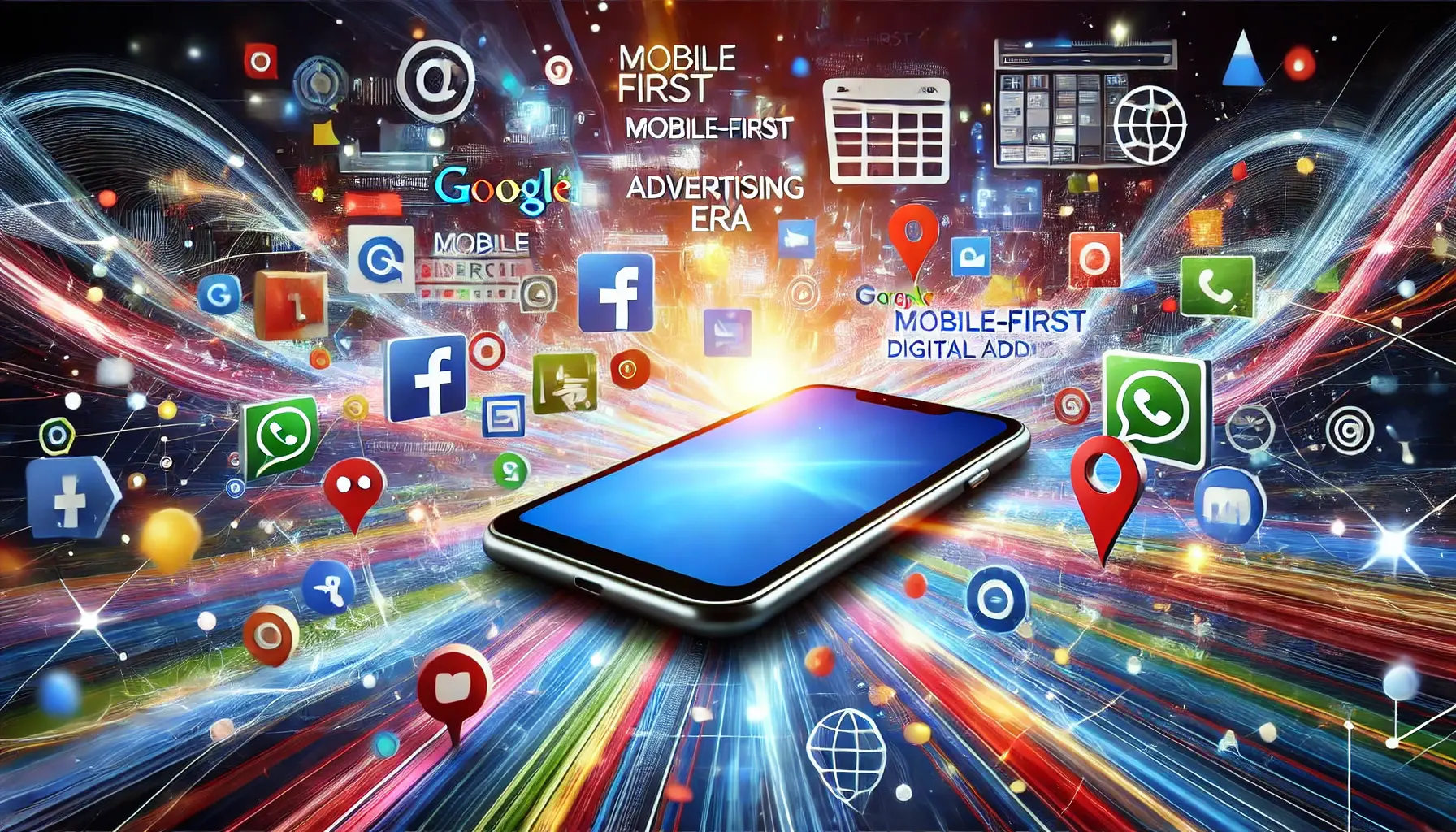In today’s fast-evolving digital ecosystem, mobile advertising has emerged as a key channel for businesses hoping to reach their audiences.
With Google Display Ads, the advertiser is assured of a robust platform that can help reach mobile users with interesting visuals and targeted ads.
Business enterprises can be in a better position to experience increased user interaction and higher returns from their ad investments by keeping abreast of the latest trends in mobile advertising on Google Display Ads.
With mobile usage continuing to trend upwards, grasping these trends is crucial to optimizing ad campaigns and capturing user attention in a competitive digital space.
In this article, we will go through seven powerful mobile advertising trends in Google Display Ads that are going to shape the future of digital marketing.
From leveraging AIArtificial Intelligence, a technology that enables machines to simulate human intelligence and make data-driven decisions. for better targeting to adapting ads for voice search, these strategies can make all the difference in your ad performance.
Whether you’re a small business owner or a marketing professional, this guide will equip you with the knowledge you need to derive maximum potential from Google Display Ads for mobile audiences.
Let’s take a look at the first trend and find out how AI is going to transform ad targeting.
- Embracing AI for Enhanced Ad Targeting
- Leveraging Video Ads for Increased Engagement
- Integrating Data Privacy with Ad Strategy
- Optimizing Ads for Voice Search
- Embracing Interactive Ad Formats for Enhanced Engagement
- Key Takeaways: Trends in Mobile Advertising on Google Display Ads
- Final Thoughts: Unlocking the Potential of Mobile Advertising
- 10 FAQs About Mobile Advertising Trends in Google Display Ads
Embracing AI for Enhanced Ad Targeting
AI helps companies tap into vast volumes of data to serve ads that are more personalized, relevant, and engaging to users.
Machine learning and predictive analyticsA branch of advanced analytics that uses data, algorithms, and machine learning to predict future outcomes based on historical data. within AI find patterns in user behavior and help advertisers target better with resonating content.
This means that users see more personalized ads, which are also more likely to yield higher conversion rates.
By studying the browsing habits of users, their purchase history, and even the types of ads they interact with, AI continuously reworks its targeting strategy in real-time.
Imagine AI-powered ad technology as an intelligent assistant aware of what a given user may be interested in at a particular moment.
The result is better-performing ads that drive user engagement and provide improved conversion rates.
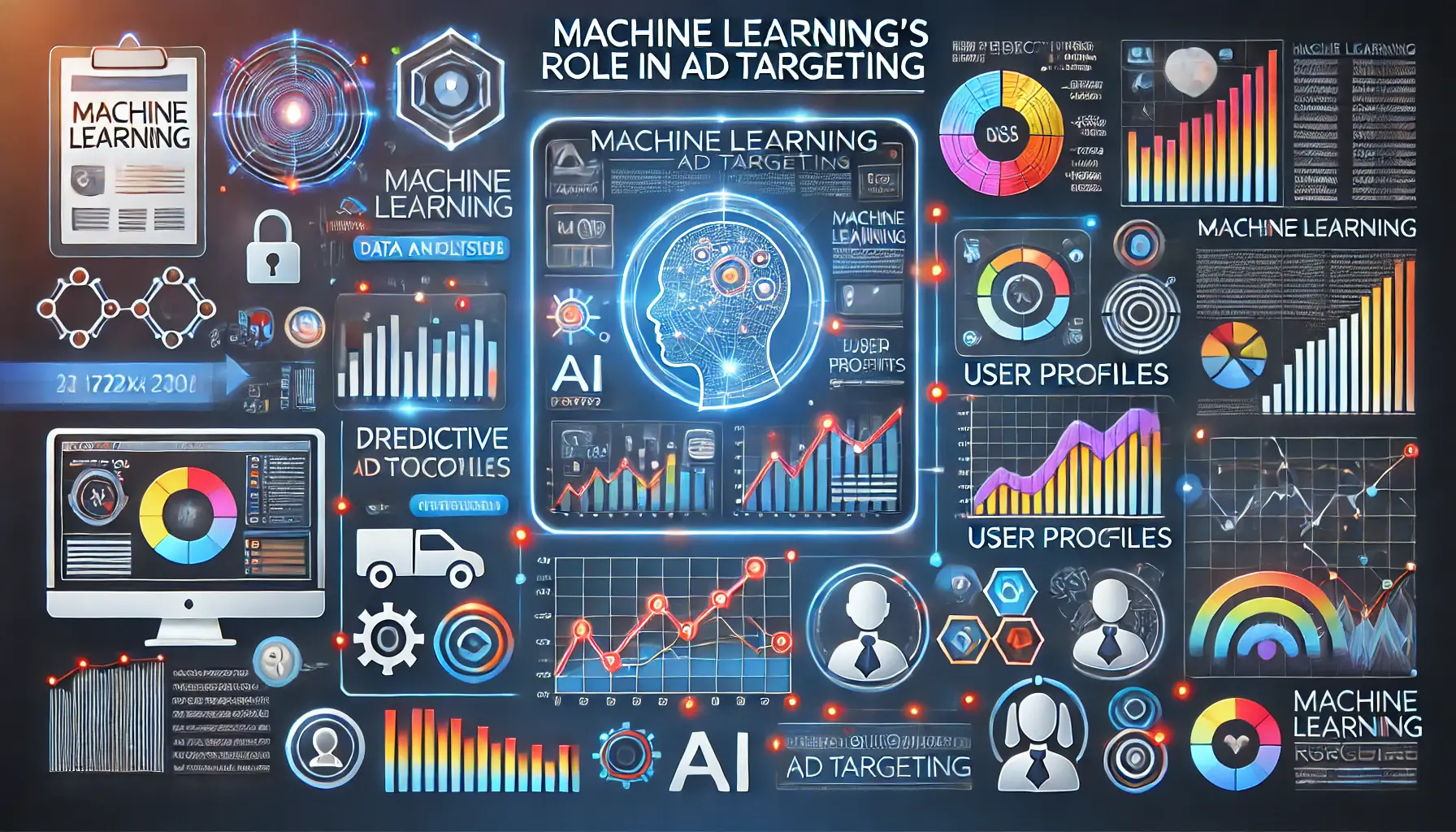
Image depicting the role of machine learning in enhancing ad targeting.
Machine Learning’s Role in Ad Targeting
A subcomponent of AI, machine learningA type of AI that enables software applications to become more accurate at predicting outcomes without being explicitly programmed to do so. learns from continuous data inputs and further refines the ad experience for improved performance.
On Google Display Ads, machine learning optimizes ad placements, identifies the optimal time to display ads, and even predicts which users are more likely to convert.
It achieves this by continuously adapting to new, evolving changes in user behaviors to ensure that ads remain relevant over time.
- Refines audience segments through the analysis of thousands of data points
- Helps predict ad performance based on historical data
- Automates ad placements for better efficiency and reach

Image showcasing predictive analysis tools enhancing ad performance through data-driven insights.
Predictive Analysis for Ad Performance
Predictive analysis takes targeting a step further with the power of forecasting future behaviors and outcomes.
Applying predictive models, Google Display Ads can estimate which audiences are more likely to convert with certain ads.
This enables advertisers to more effectively use their budget, targeting audiences that have higher conversion potential.
For example, predictive analytics may identify users who recently searched for ‘sustainable fashion’ as more likely to click on ads related to eco-friendly products.
In this way, brands can reach an even more qualified audience, optimize ad spend, and ultimately improve ROI.
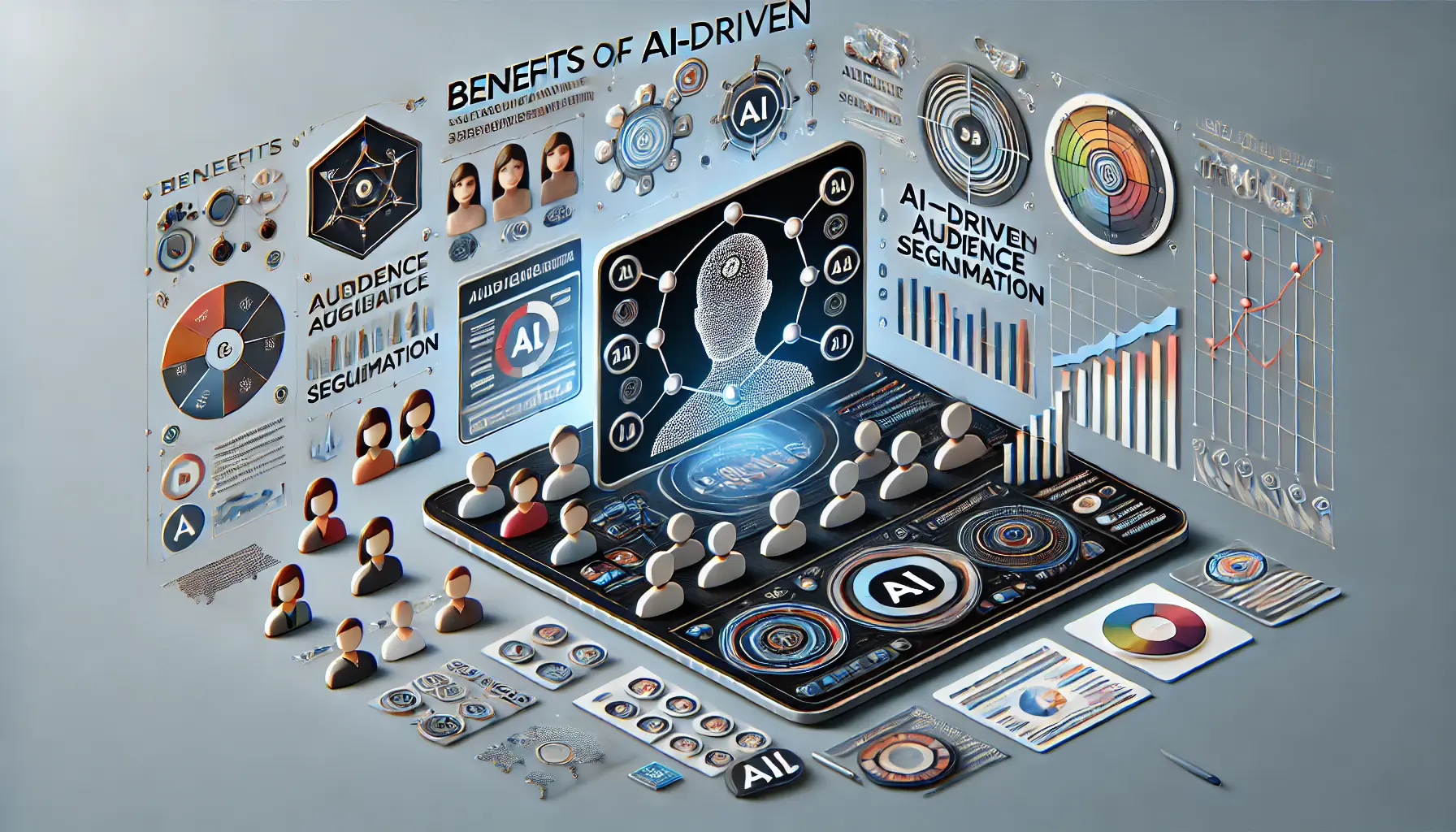
Image depicting the advantages of AI-driven audience segmentation in digital advertising.
Benefits of AI-Driven Audience Segmentation
AI-driven segmentation goes beyond simple demographics and interests.
By clustering audiences based on behavior, purchasing habits, and even predicted needs, AI creates highly specific audience groups.
This allows advertisers to deliver messages that genuinely resonate, boosting user experience and creating stronger connections with potential customers.
Using Google Display Ads, AI-driven segmentation can:
- Target users based on in-depth behavioral patterns, not just demographics
- Serve dynamic ads across a variety of audience segments
- Reduce wasted ad spend by focusing on high-potential segments
AI in mobile advertising is certainly transformative, and as it continues to evolve, businesses will find even greater opportunities to make ads feel personal, timely, and relevant.
Next, let’s look at the influence of video ads and how they drive engagement in mobile advertising.
AI is revolutionizing ad targeting by using vast data to improve personalization, engagement, and conversion rates.
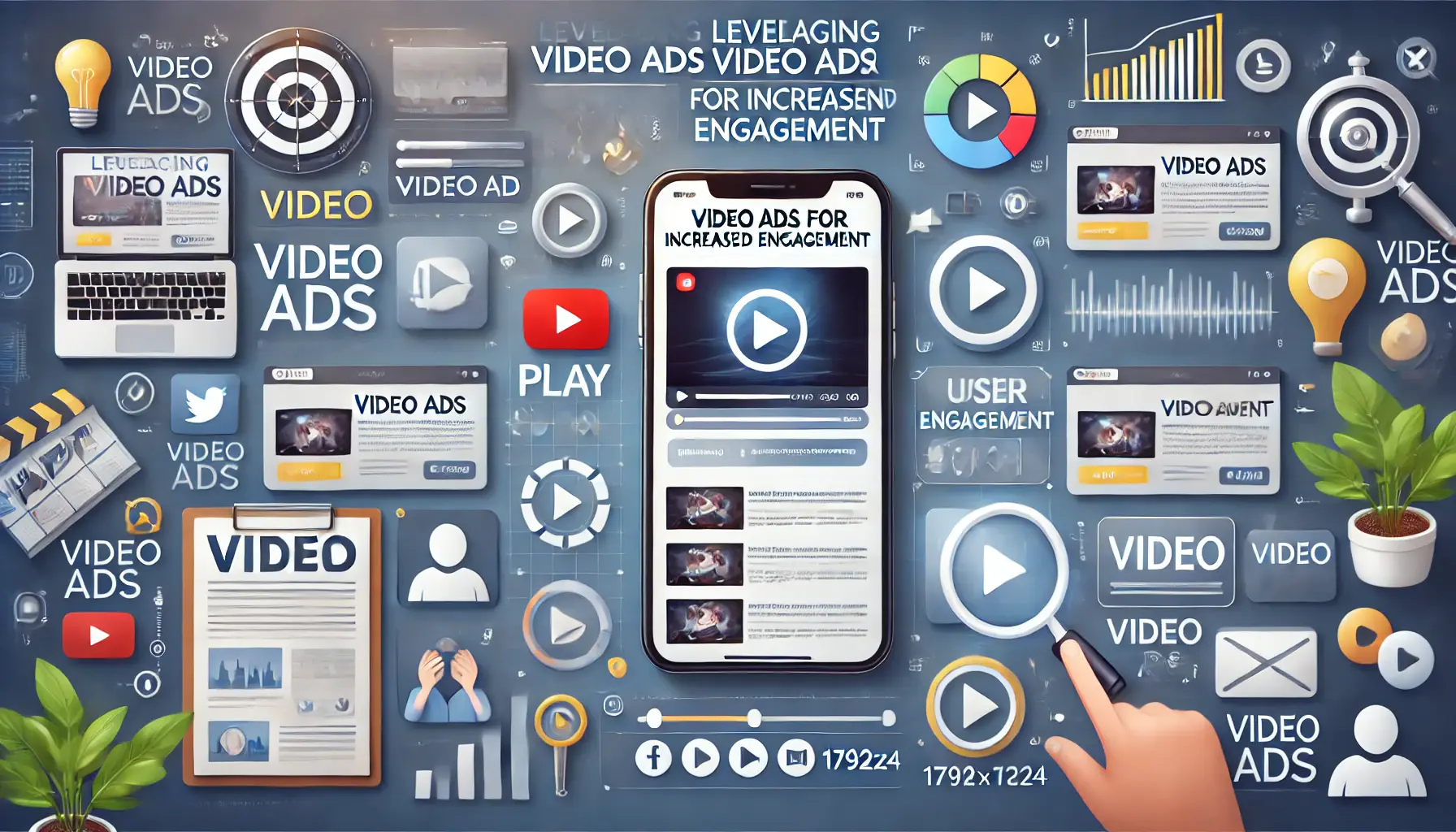
Image showcasing video ads as a tool for driving higher engagement in digital advertising.
Leveraging Video Ads for Increased Engagement
Video ads have become one of the strongest tools in mobile advertising, especially on platforms like Google Display Ads, where visual engagement is key.
Given that a significant share of internet usage now comes from mobile devices, users are increasingly drawn to video content.
Video ads easily capture viewers’ attention in a short span, making it easier to convey messages in a dynamic and memorable way.
Video ads work because they offer various formats, such as short introductory clips, product demonstrations, or customer testimonials.
They provide an experience that text or static images cannot match.
Video ads are particularly popular among younger audiences, who enjoy seeing dynamic and interactive content as part of their daily browsing.
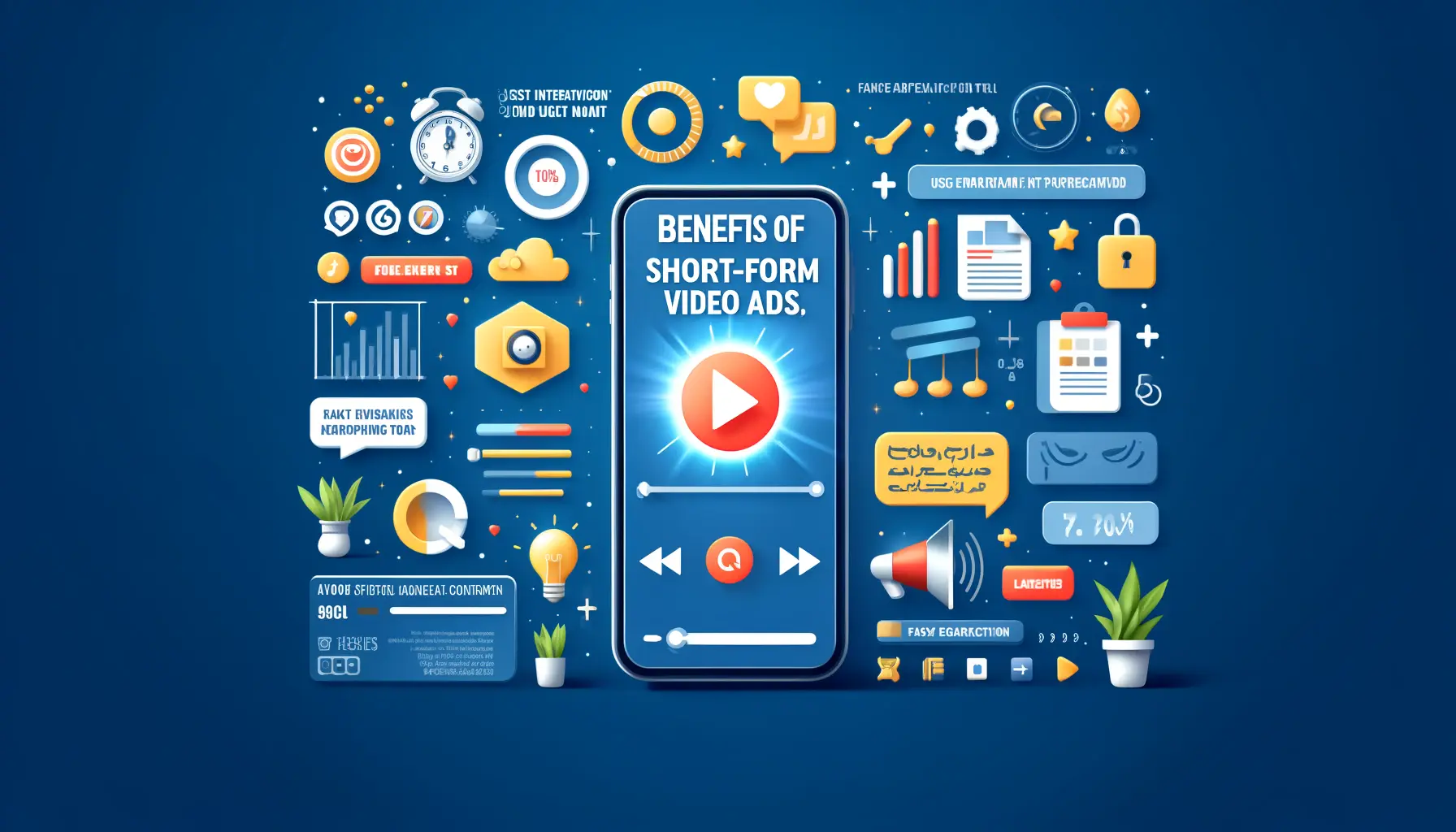
Image highlighting the quick engagement benefits of short-form video ads in digital advertising.
Benefits of Short-Form Video Ads
Short-form video ads, typically 15 seconds or less, are highly effective in delivering compact messages to viewers who may not have time for longer content.
These ads are often more shareable and can lead to higher engagement since users are more likely to watch a short ad to completion.
Google Display Ads enables advertisers to create bite-sized video content that resonates with mobile users.
- Quickly captures attention with short, impactful messaging
- Higher completion rates due to the shorter length
- Effective for brand recall and recognition
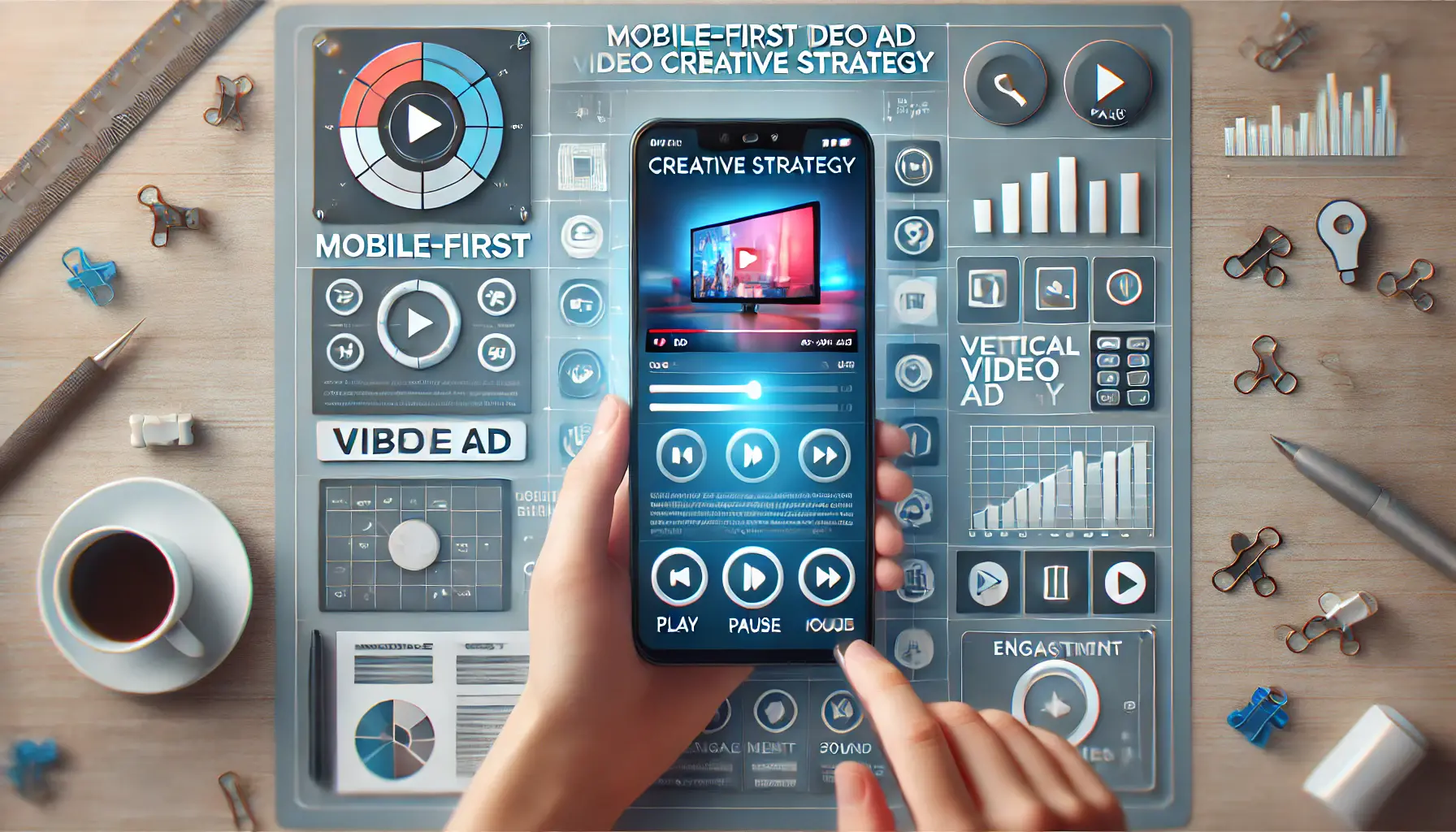
Image representing the optimized mobile-first approach for video ads.
Mobile-First Video Ad Creative Strategy
As mobile becomes the default platform for internet access, creating optimized video ads for mobile is essential.
Mobile-first video strategies include designing vertical videos that fit well on mobile screens and providing sound-off functionality, as many mobile users browse with sound muted.
Google Display Ads supports mobile-optimized formats to ensure your ads are viewed as intended on mobile devices.
- Vertical video formats tailored for mobile screens
- Sound-off optimization for engaging viewers without audio
- High-resolution visuals for an enhanced viewer experience
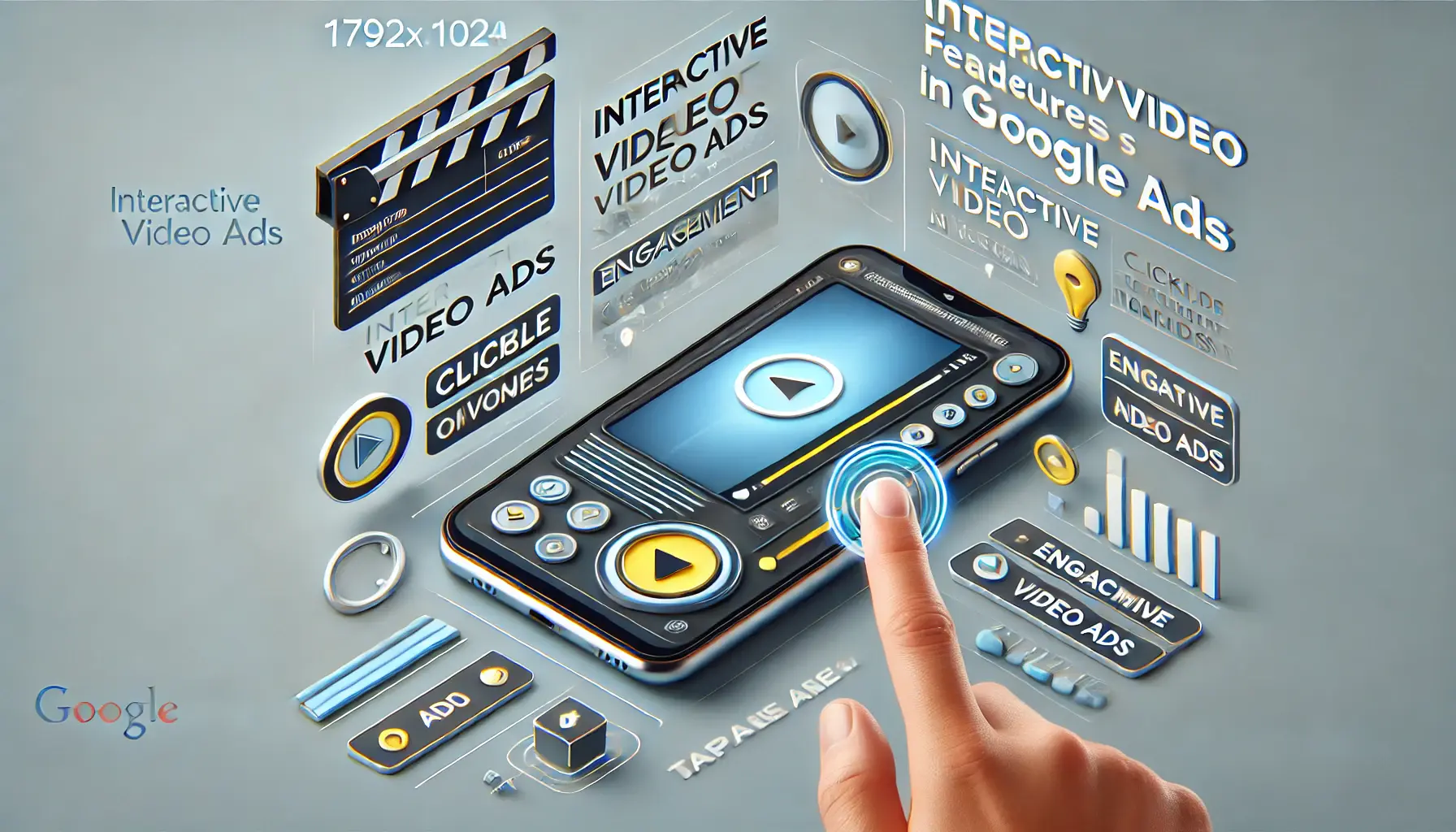
Image demonstrating interactive elements in Google Ads video features.
Interactive Video Features in Google Ads
Interactive features like clickable overlays, product tags, and call-to-action (CTA) buttons can significantly increase engagement by prompting viewers to interact with the ad.
Google Display Ads offers a variety of interactive options, allowing advertisers to create more engaging, actionable video ads.
- Clickable overlays that link directly to product pages
- Interactive CTAs to encourage specific actions
- Product tagging to boost engagement

Image showing effective video ad placement strategies through analytics and engagement metrics.
Best Practices for Video Ad Placement
Strategic video ad placement is crucial for reaching the right audience at the right time.
Google Display Ads allows advertisers to select placements that best align with their target demographic, increasing the likelihood of user engagement.
Best practices include positioning ads within relevant content, targeting specific interests, and optimizing for peak viewing times.
- Place ads within content relevant to your audience
- Use interest-based targeting for precise reach
- Analyze and optimize for peak engagement times
As mobile advertising continues to grow, video ads remain one of the most effective tools for capturing attention and driving audience engagement.
By applying these strategies, you can create memorable video content that resonates with your audience, resulting in improved outcomes from your Google Display Ads campaigns.
Next, we’ll explore the importance of data privacy and how it’s shaping ad strategy.
Video ads capture mobile users’ attention effectively, delivering impactful and memorable content.

Image representing the integration of data privacy within digital advertising strategies.
Integrating Data Privacy with Ad Strategy
Today, data privacy needs to be embedded in any advertising strategy, especially in the digital landscape.
Consumers are becoming increasingly conscious of how their personal information is gathered and used, making it essential for advertisers to adopt more transparent approaches that reassure customers about privacy.
Integrating data privacy into your ad strategy not only builds trust with your audience but also ensures compliance with evolving regulations.

Image representing user consent management and preference settings in digital advertising.
Understanding User Consent and Preferences
Respecting user consent is fundamental to data privacy.
Implementing clear and straightforward consent mechanisms allows users to control how their data is used.
By providing options for users to customize their ad experiences, you demonstrate a commitment to their privacy preferences, which helps build trust and encourages users to engage more willingly with your ads.
- Use transparent and understandable consent forms
- Offer opt-in and opt-out options for data collection policies
- Regularly update privacy policies to reflect current data usage practices

Image depicting Google’s privacy-compliant tools for data protection in digital advertising.
Navigating Google’s Privacy-Compliant Tools
Google Ads offers tools that help advertisers maintain compliance with data privacy regulations while achieving their marketing objectives.
For instance, Google Ads provides data-driven attribution modelsMethods to determine how credit for sales and conversions is assigned to touchpoints in customer journeys. that don’t rely on individual user data, aligning with privacy standards.
- Use Google’s Ads Data Hub for aggregated data analysis
- Enable Consent Mode to control how Google tags behave based on user consent
- Utilize enhanced conversions to improve measurement accuracy while preserving privacy

Image showing the relationship between data privacy and ad personalization in digital marketing.
Impact of Data Privacy on Ad Personalization
With data collection restrictions, contextual targeting and first-party dataData collected directly from users by the company or website that owns the data, often used for targeted advertising. have become increasingly vital for advertisers.
Privacy regulations encourage the development of ads that are relevant to the content being viewed, rather than solely based on user behavior.
- Leverage first-party data from direct user interactions
- Focus on creating content relevant to the platform or page context
- Utilize machine learning to optimize ad delivery without compromising privacy

Image demonstrating the role of transparency in building trust in digital advertising.
Building Trust Through Transparent Ad Practices
Clearly explaining to consumers how their data is collected, stored, and used for ad targeting helps remove any mystery and builds trust.
Transparency in data practices is essential for nurturing a more trusting relationship with your audience.
- Provide accessible information on data collection methods
- Allow users to control their data and ad preferences
- Ensure compliance with all relevant data protection regulations
Integrating data privacy into your advertising strategy is not just about compliance; it’s about showing respect for your audience and building long-term, trust-based relationships.
By focusing on privacy-centric practices, you can create more effective and ethical ad campaigns that resonate with today’s consumers.
In the next section, we will discuss how optimizing ads for voice search can enhance your mobile advertising efforts.
Data privacy is crucial for building trust and compliance, essential for modern advertising strategies.
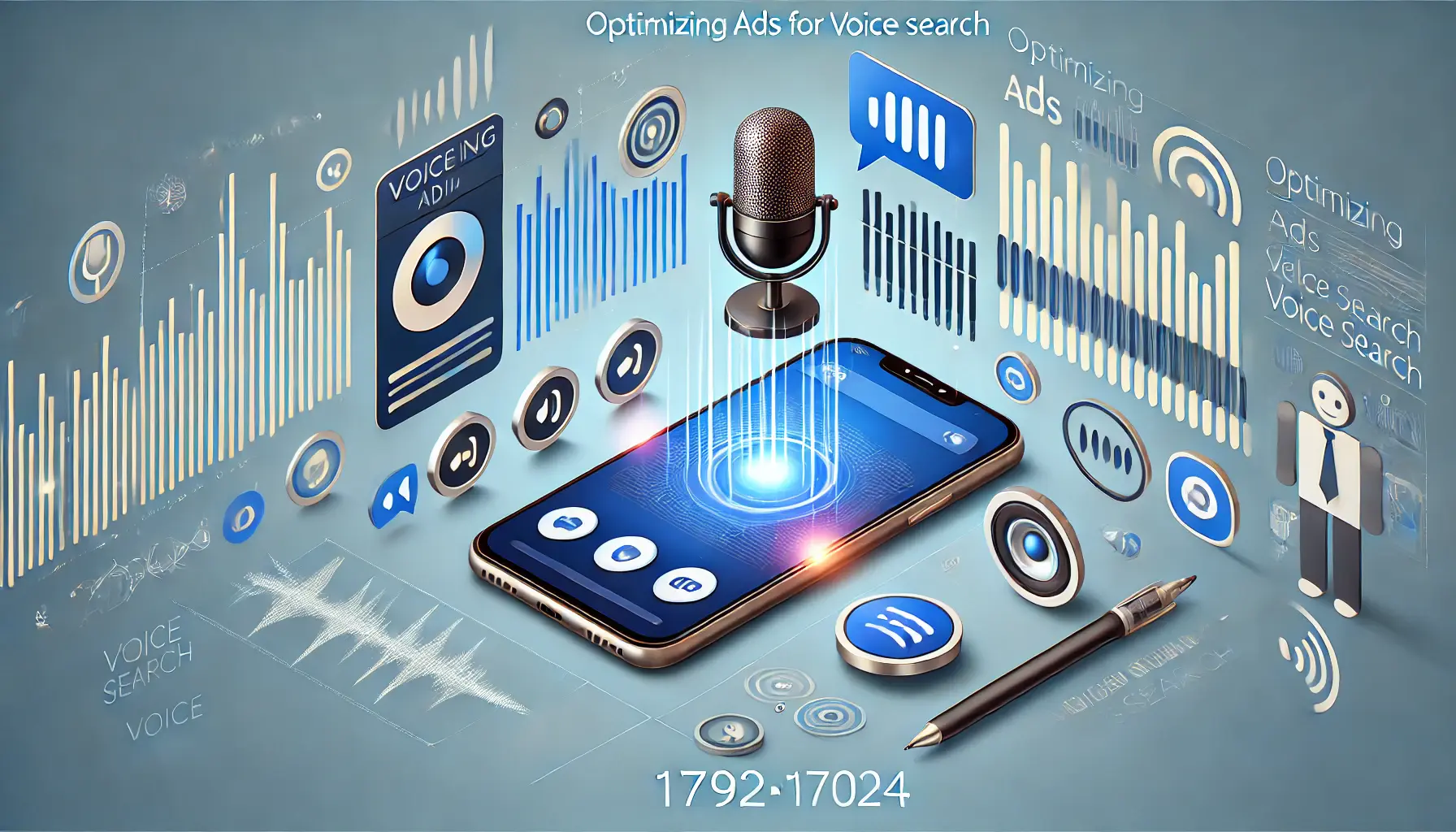
Image illustrating the integration of voice search optimization in digital advertising.
Optimizing Ads for Voice Search
As voice assistantsDigital assistants that respond to voice commands, such as Google Assistant, Siri, and Alexa. like Google Assistant, Siri, and Alexa become more popular, voice search has transformed how people access information.
For advertisers, this shift makes it crucial to optimize ads for voice search, especially within the context of Google Display Ads.
By aligning your advertising strategy with emerging voice search trends, you can communicate more effectively and engage users who prefer interacting through voice.

Image illustrating user interaction with voice search technology in digital marketing.
Understanding Voice Search Behavior
Voice queries differ significantly from traditional text-based searches.
Users often phrase their queries in natural, conversational language and as questions.
For example, instead of typing ‘best Italian restaurant,’ a user might ask, ‘What is the best Italian restaurant near me?’ Recognizing these patterns is essential for optimizing ads to match voice search intent and phrasing.
- Target long-tail keywords that reflect conversational language
- Incorporate question-based phrasing in ad copy and targeting
- Understand the context and intent behind common voice queries

Image representing the role of schema markup in enhancing website visibility on search engines.
Using Schema Markup to Improve Visibility
Schema markup, or structured data, provides search engines with additional information about your website content.
Implementing schema markupCode added to a website to help search engines understand content better, often enhancing search result visibility. can increase the likelihood of your content appearing in voice search results, enhancing ad visibility and ensuring accurate presentation to users.
- Use schema markup to provide detailed information about products or services
- Ensure business information is accurate, up-to-date, and properly marked up
- Use Google’s Structured Data Testing Tool to verify correct implementation

Image depicting the effectiveness of conversational and engaging ad content.
Creating Conversational and Informative Ad Content
Since voice searches are conversational, your ad content should reflect this tone.
Writing ad copy that answers common questions and provides clear, concise information can improve relevance in voice search results.
Targeting local SEO can also increase visibility for location-based voice queries.
- Create ad copy that addresses specific questions users may ask
- Use local keywords to capture nearby voice search traffic
- Ensure your Google My Business listing is complete and accurate

Image representing Google’s voice search optimization tools in digital marketing.
Leveraging Google’s Voice Search Optimization Tools
Google provides a range of tools and features to help advertisers optimize for voice search.
Utilizing these resources can enhance ad performance and keep you competitive in the evolving digital landscape.
- Use Google’s Keyword Planner to identify voice search trends and relevant keywords
- Implement responsive search ads to handle various query types, including voice
- Monitor performance metrics to understand voice search impact on campaigns
By optimizing ads for voice search, you can capture a targeted and rapidly growing segment of users who prefer voice interactions.
This approach not only extends your reach but also increases user engagement by providing a seamless and intuitive search experience.
In the next section, we will explore how artificial intelligence can further enhance ad targeting and performance.
Voice search optimization enhances engagement by aligning with conversational search behaviors and user preferences.
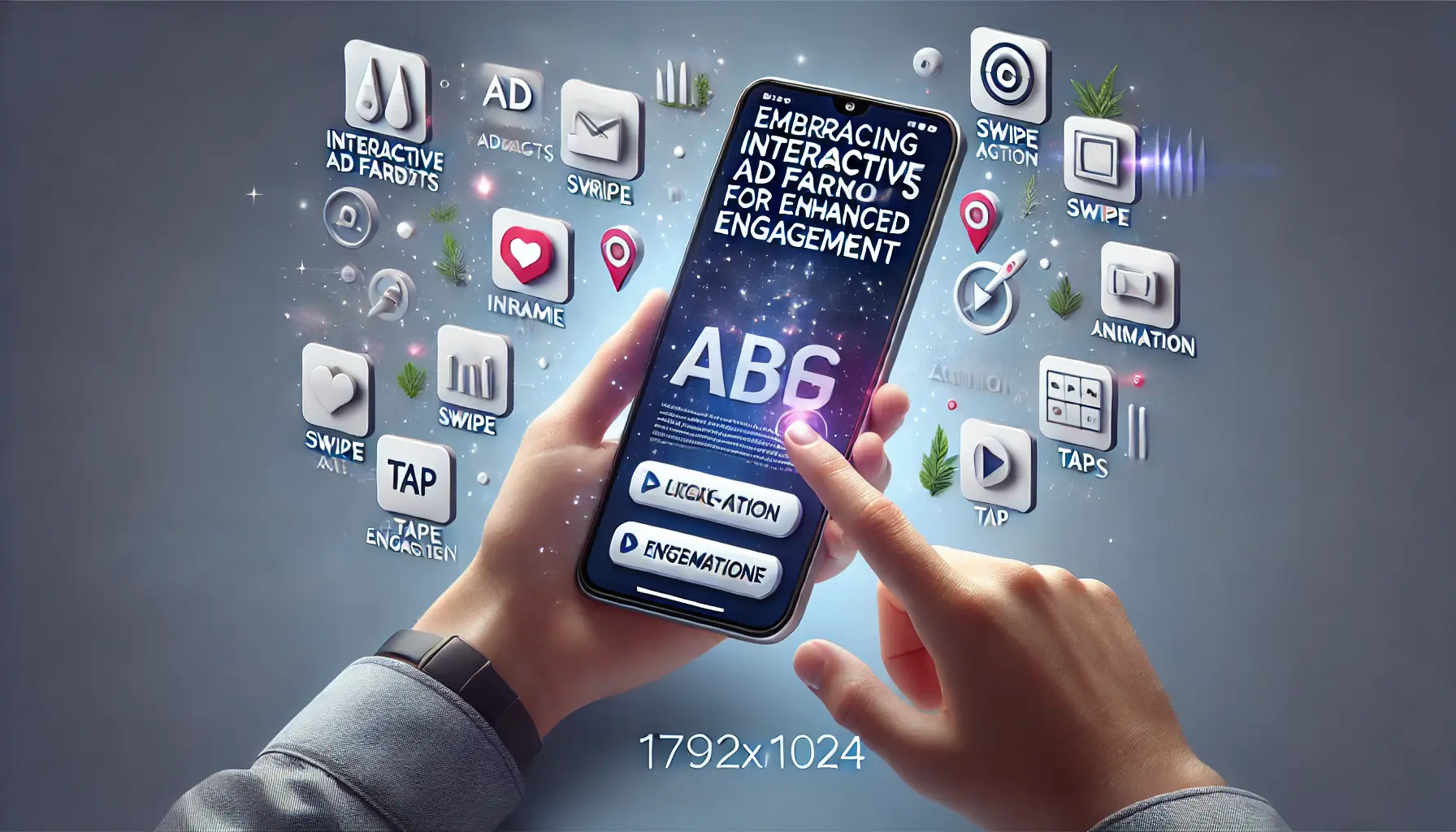
Image representing the use of interactive ad formats to boost user engagement in digital advertising.
Embracing Interactive Ad Formats for Enhanced Engagement
The rapidly changing field of mobile advertising is making it challenging to hold users’ attention.
Interactive ad formats have emerged as a powerful solution, offering engaging experiences that invite user interaction and result in higher engagement rates.
By layering an interactive component on top of your Google Display Ads, you enable the audience to engage with a memorable experience, leading to improved advertising outcomes.
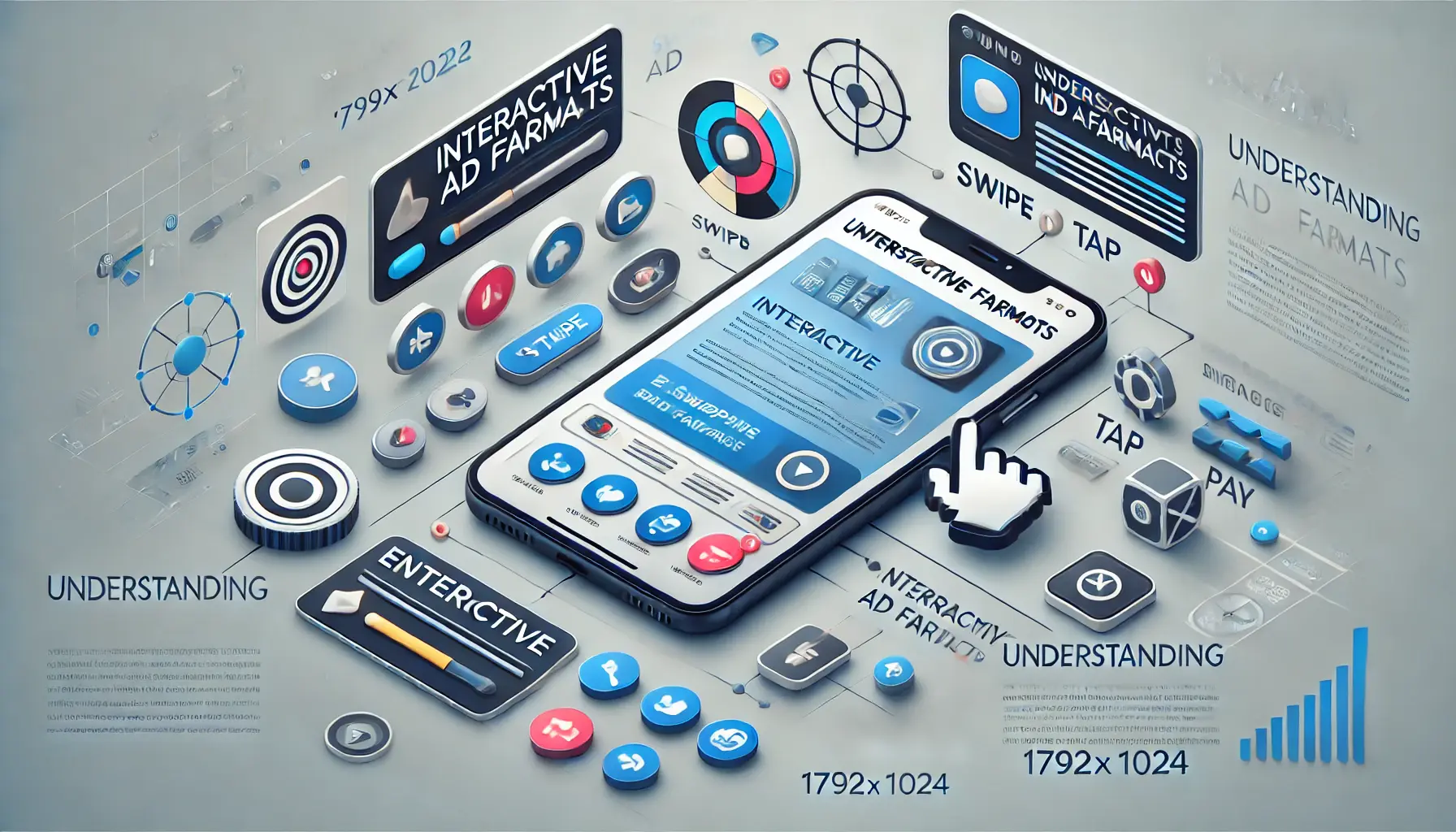
Image depicting various interactive ad formats in digital advertising to enhance user engagement.
Understanding Interactive Ad Formats
Interactive ads engage users through elements that require active participation, such as swiping, tapping, or answering questions.
These formats transform passive viewers into active participants, increasing the likelihood of message retention and conversion.
- Playable ads let users experience a preview of a game or app before downloading it
- Quizzes and polls engage users by prompting them to answer questions related to the brand or product
- 360-degree videos offer an immersive experience, allowing users to explore an object or environment from different angles

Image showcasing the benefits of interactive ads in mobile advertising to enhance user engagement.
Benefits of Interactive Ads in Mobile Advertising
Incorporating interactive elements in your mobile advertising strategy offers several advantages:
- Increased Engagement: Interactive ads capture more user attention, resulting in higher engagement rates
- Enhanced User Experience: By providing more enjoyable and engaging experiences, interactive ads can enhance user satisfaction and improve brand perception
- Higher Conversion Rates: Engaged users are more likely to take desired actions, such as making a purchase or signing up for a newsletter
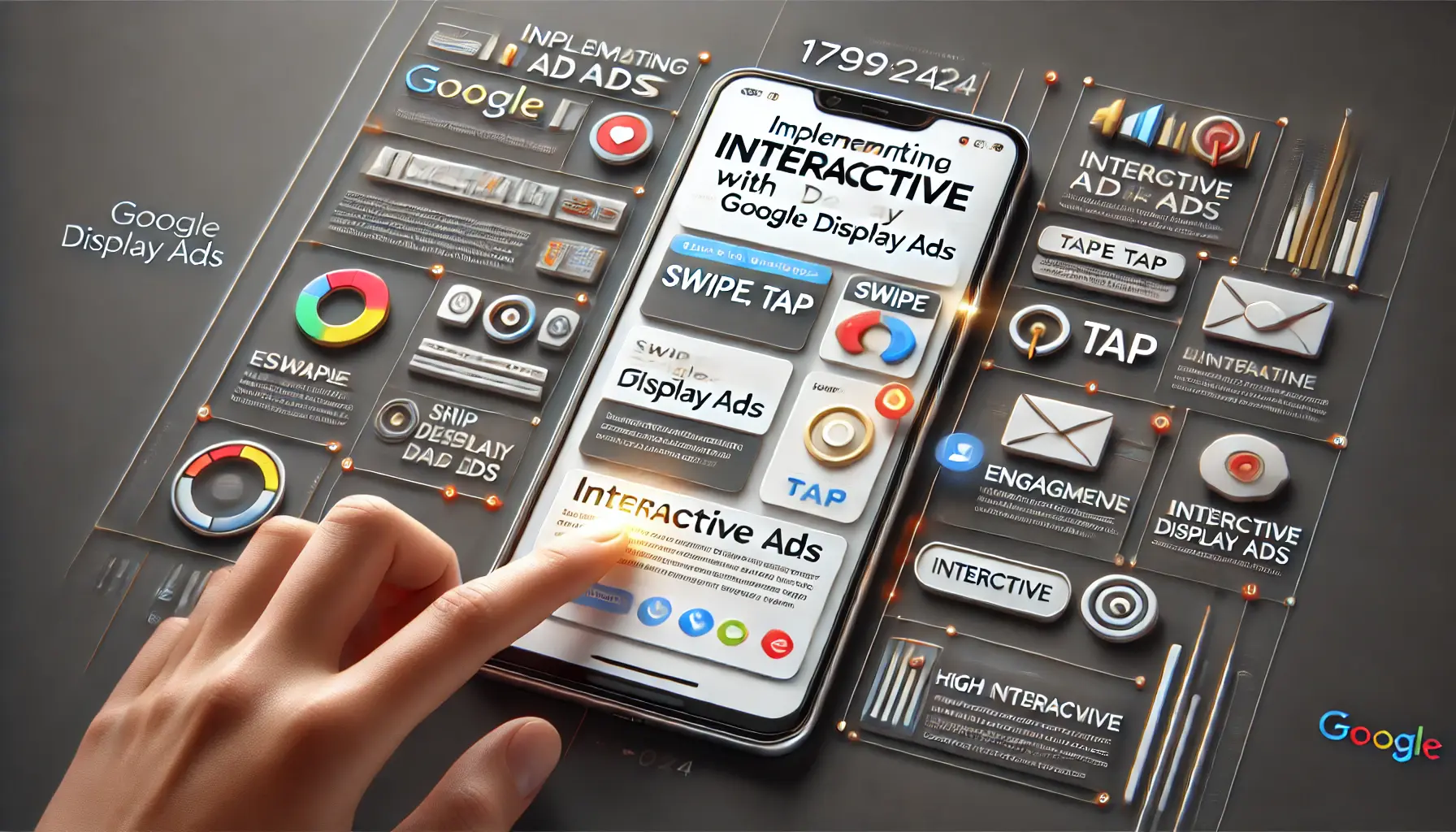
Image depicting interactive ad implementation using Google Display Ads for enhanced user engagement.
Implementing Interactive Ads with Google Display Ads
Google Display Ads offers several tools and formats to help advertisers create interactive ad experiences:
- Rich Media Ads: These use HTML5 to create rich media experiences, incorporating interactive elements like animations, videos, and games
- Lightbox Ads: When clicked, these ads expand into a full-screen experience that can include videos, images, and other interactive content
- Responsive Display Ads: Primarily designed for adaptability, these ads can incorporate interactive elements that enhance user engagement

Image illustrating best practices in creating effective interactive ads for enhanced user engagement.
Best Practices for Creating Effective Interactive Ads
To maximize the effectiveness of your interactive ads, consider the following best practices:
- Keep It Simple: Avoid overcomplicating interactions; they should be intuitive and easy to understand, ensuring a smooth user experience
- Align with Brand Objectives: Make sure the interactive experience aligns with your brand message and campaign goals
- Optimize for Mobile: Given the high prevalence of mobile usage, ensure your interactive ads are optimized for various screen sizes and touch interactions
- Test and Iterate: Regularly test your interactive ads to identify areas for improvement and optimize performance based on user engagement metrics
By embracing interactive ad formats, you can create engaging and memorable experiences that resonate with your audience, leading to higher engagement and conversion rates.
In the next section, we will explore the importance of data privacy in mobile advertising and how to integrate it into your ad strategy.
Interactive ads create memorable experiences, transforming viewers into active participants, leading to higher conversions.

Image summarizing key trends in mobile advertising for Google Display Ads.
Key Takeaways: Trends in Mobile Advertising on Google Display Ads
As technology and user behavior continue to evolve rapidly, the world of mobile advertising on Google Display Ads is constantly changing.
Businesses that aim to optimize their advertising impact and effectively reach mobile audiences must keep up with these developments.
In this article, we discussed the main trends and strategies shaping the future of mobile advertising, from AI-powered targeting to the importance of data privacy.

Image depicting the role of AI-powered targeting in boosting engagement and conversion in digital advertising.
1. AI-Powered Targeting Increases Engagement and Conversion
With tools like machine learning and predictive analysis, AI can help businesses ensure that the right audiences are reached, driving both engagement and conversion rates.
By delivering ads that are highly relevant to users, AI-powered targeting enables advertisers to maximize their impact on Google Display Ads.
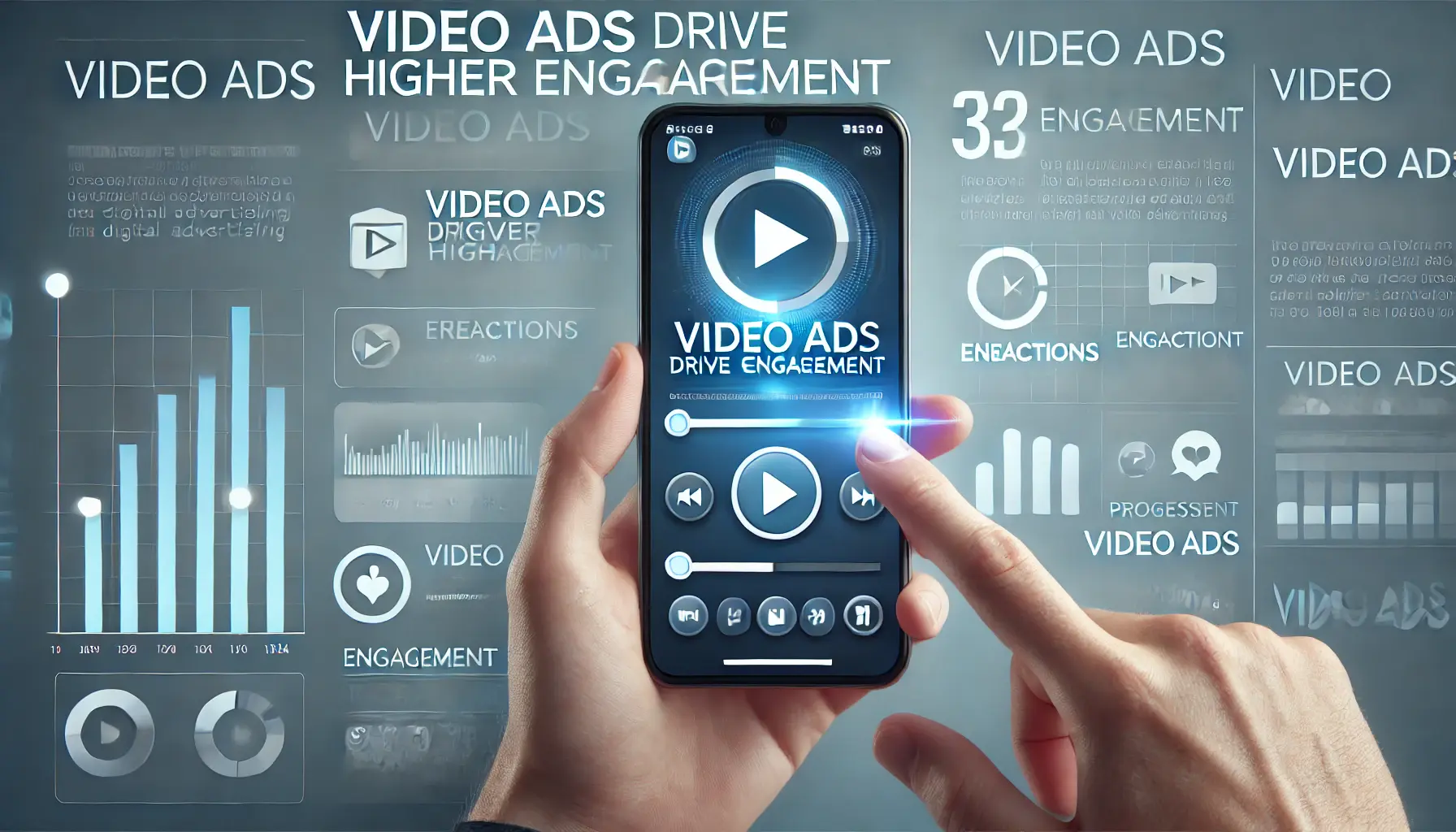
Image showing the effectiveness of video ads in increasing user engagement in digital advertising.
2. Video Ads Drive Higher Engagement
Video has become a highly effective format for capturing user attention on mobile devices.
Short-form videos, mobile-optimized design strategies, and interactive video features enable companies to convey their messages in visually compelling and memorable ways.
Video ads enhance brand recall and provide a dynamic way to connect with younger, mobile-savvy audiences.

Image representing data privacy as an essential strategy in digital advertising.
3. Data Privacy as a Core Advertising Strategy
As consumers become more aware of data privacy issues, integrating privacy measures into advertising strategies has become essential.
Transparent data practices, consent-driven approaches, and privacy-compliant tools from Google Ads help advertisers build trust with their audiences, leading to higher user satisfaction and more effective ad delivery.

Image illustrating the expansion of audience reach through voice search optimization in digital advertising.
4. Optimizing for Voice Search to Expand Reach
By aligning ads with voice search behaviors and incorporating strategies like conversational ad copy and schema markup, businesses can reach new audiences and enhance their competitive advantage among the growing segment of users who prefer voice interactions.

Image highlighting the impact of interactive ad formats on increasing engagement and conversions in digital advertising.
5. Interactive Ad Formats Increase Engagement and Conversions
Interactive ad formats, such as playable ads, quizzes, and 360-degree videos, provide immersive and engaging experiences.
These formats encourage active participation, transforming passive viewers into engaged users, which can translate into higher conversion rates and more impactful brand interactions.
Keeping up with mobile advertising trends ensures optimized ad performance and audience reach.

Image showcasing the potential of mobile advertising with targeted ads and growth indicators.
Final Thoughts: Unlocking the Potential of Mobile Advertising
To realize the maximum potential of mobile advertising on Google Display Ads, businesses should adopt these trends and integrate them into their strategies.
By leveraging AI, embracing video and interactive formats, prioritizing data privacy, and optimizing for voice search, advertisers can create campaigns that are both effective and user-friendly.
As mobile advertising continues to grow, staying informed about these trends and adapting to new technologies will be key to long-term success.
By implementing these best practices, businesses of all sizes can achieve stronger connections with mobile audiences, higher engagement rates, and greater returns on investment.
Following these insights can help you make the most of Google Display Ads and ensure that your mobile ad campaigns are both effective and future-proof.
Leveraging AI, video, interactive formats, data privacy, and voice search trends empowers businesses to connect deeply with mobile audiences.
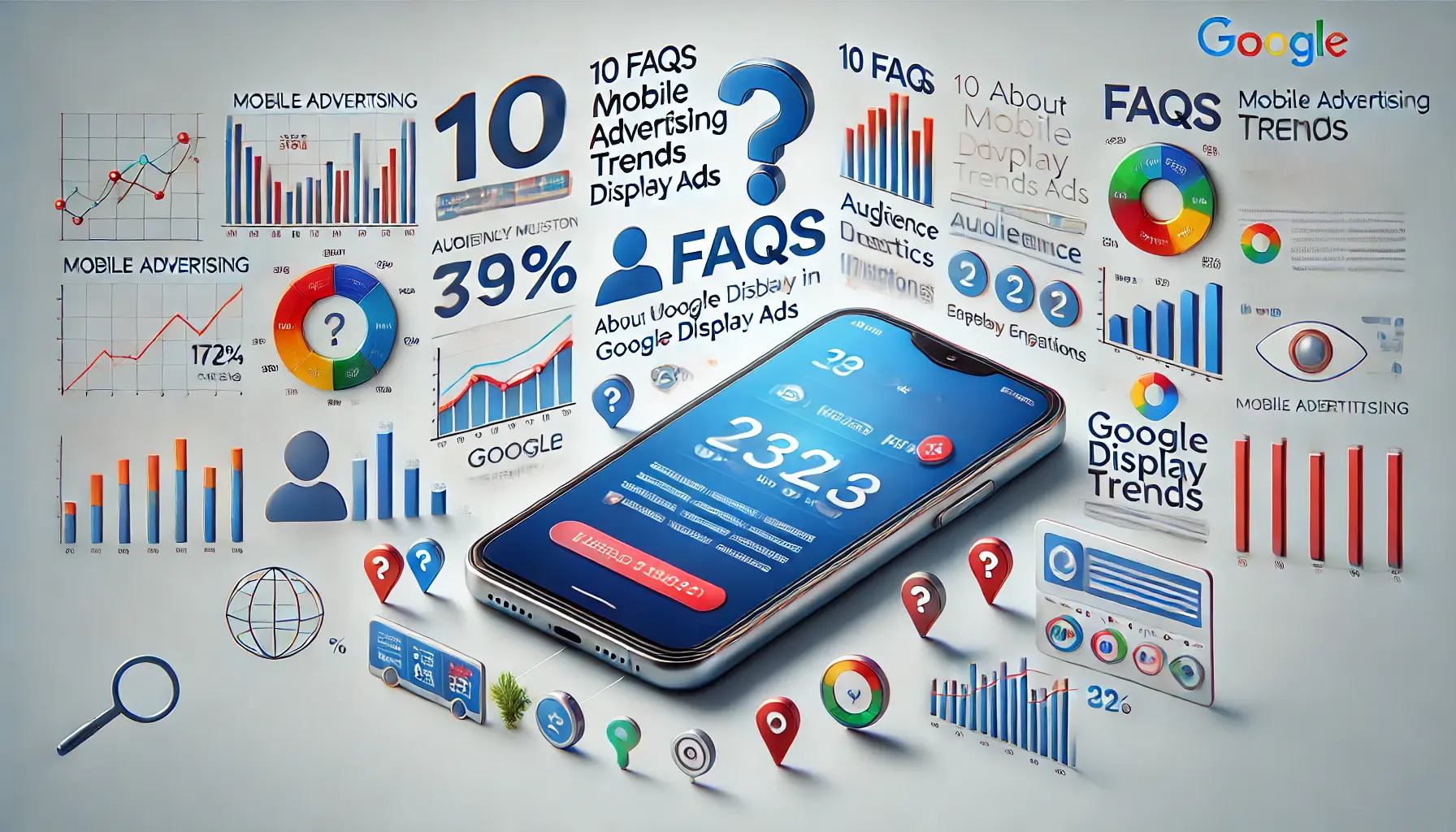
Image representing mobile advertising trends with a smartphone and engagement metrics for frequently asked questions.
Your campaigns can be managed by an agency specialized in Google Ads, check out our service page.
10 FAQs About Mobile Advertising Trends in Google Display Ads
As mobile advertising continues to evolve, many businesses have questions about optimizing their strategy on Google Display Ads.
Here are some common questions and quick answers to help inform your advertising strategy.
AI analyzes user behavior and preferences, enabling advertisers to deliver personalized ads that increase engagement and conversion rates.
Video ads capture user attention effectively, enhance brand recall, and provide dynamic content that resonates with mobile users.
Data privacy builds user trust, ensures compliance with regulations, and enables ethical, effective advertising.
Use conversational language, target long-tail keywords, and utilize schema markup to improve presence in voice search results.
Interactive ads engage users through elements like quizzes or 360-degree videos, leading to higher engagement and conversion rates.
Implement transparent data practices, obtain user consent, and use privacy-compliant tools provided by platforms like Google Ads.
Machine learning continuously analyzes data to optimize ad placement, targeting, and bidding strategies for improved performance.
Short-form videos convey messages quickly, have high completion rates, and are easily shareable, boosting user engagement.
Schema markup provides search engines with structured data, improving content visibility in voice search results.


